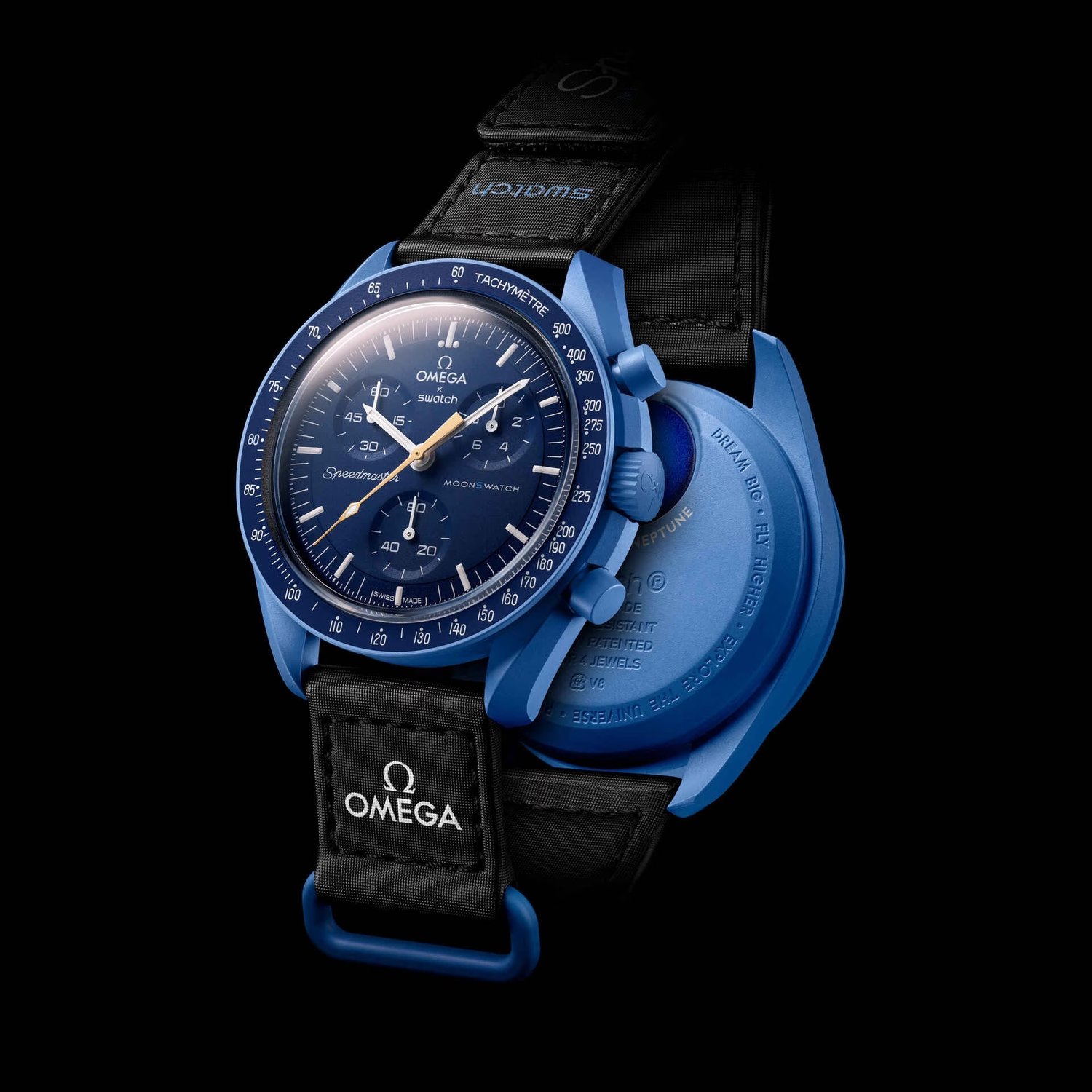MoonSwatch Neptune: The Super Blue Moon Edition That Rose Above Its Stains

Published: Sep 03, 2023
MoonSwatch storming the scene once again
In 2022, the MoonSwatch stormed onto the watch scene, causing near-riots in Swatch shops worldwide and triggering supply shortages. The $260 MoonSwatch, a bioplastic take on Omega's iconic Speedmaster Moonwatch, suddenly became a sought-after luxury piece, with some models fetching thousands of dollars on resale markets. Despite the initial hiccups, Swatch Group, owner of both Swatch and Omega, reveled in this hype phenomenon. Millions were sold, and the MoonSwatch played a pivotal role in a 36.4 percent boost in the company's operating profit in the first half of the year.

The Blue-Stained Conundrum
Yet, amid all this success, there was a peculiar problem with one MoonSwatch model – the Mission to Neptune. These watches, made from bioceramic, a unique blend of castor-derived bioplastic and ceramic powder, were designed to pay homage to the solar system. However, the all-blue Mission to Neptune had an unexpected issue; it left blue marks on its wearers' wrists initially. Even I can attest to this, as I owned one of these original models. Fortunately, the staining issue resolved itself after about a week.


Moonswatch
Reference: SO33N101-108
Case/Dial: 40mm Bioceramic
Movement: Quartz
Strap: Velcro Nato Strap
Style: Chronograph
Recalibrating the Pigmentation
To address this unanticipated staining problem, Swatch promptly halted the production of Neptune watches. They set to work on recalibrating the pigmentation of the bioceramic. The result was a MoonSwatch even scarcer and more sought-after than its counterparts. On resale sites, prices for the Neptune soared, at times exceeding $2,400.

Daniel Craig and the Neptune Effect
Notably, the stain issue did little to dampen enthusiasm for the Neptune. Even Daniel Craig made a statement by wearing one to a film premiere with a tailored suit. While the Neptune did make a return to the market in recent months, it remained relatively scarce. Although MoonSwatch resale prices have largely normalized, the Neptune continues to command a premium, with prices starting at around $1,000.

A Premium on Premium
In a clever marketing move, Swatch decided to capitalize on the MoonSwatch hype by releasing a brand-new version available for just one day at $300. These limited editions of the gray Mission to the Moon model, with the only distinction being a chronograph second hand coated in various styles of Moonshine Gold (an Omega-used alloy), were released on full moon dates since March. This strategy reignited interest in MoonSwatch, albeit without the frenzied scenes seen during the initial launch.
The Super Blue Moon Edition
August 30 brings a rare celestial event – a "super blue moon," the year's largest full moon. Swatch chose this moment to unveil the Mission to Neptune as a limited edition, rather than the Mission to the Moon. Apart from a golden chronograph second hand made from recycled Moonshine Gold, produced exclusively during the full moon of August 1, this edition remains identical to the core collection model. Swatch includes a certificate with the watch to confirm its authenticity.

A Silent Return
Interestingly, Swatch hasn't officially addressed the Neptune's withdrawal in the past or its recent reappearance. However, this limited-edition release suggests wider availability and renewed interest. For those hoping for a broader range of color options for the MoonSwatch, it seems patience remains the key.
In conclusion, the MoonSwatch Neptune has overcome its initial staining woes to become a sought-after collector's item. Swatch's clever marketing tactics have ensured that the hype around the MoonSwatch continues, with each limited edition release attracting eager buyers. The story of the MoonSwatch, marked by supply shortages and surprises, continues to unfold in the world of horology.
